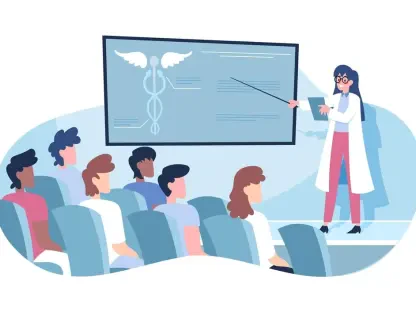Today, we’re thrilled to sit down with Faisal Zain, a renowned healthcare expert with deep expertise in medical technology. With years of experience in the manufacturing of diagnostic and treatment devices, Faisal has been at the forefront of innovation in the healthcare sector. In this interview, we dive into the recent White House announcement of the TrumpRx website, exploring its implications for drug pricing, the role of direct-to-consumer platforms, and the broader push for transparency and affordability in the pharmaceutical industry. We’ll unpack the “most favored nation” pricing model, the involvement of major players like Pfizer, and the potential challenges and opportunities this initiative presents for American patients.
Can you walk us through what the TrumpRx website is and how it aims to change the way people access prescription drugs?
TrumpRx is a new direct-to-consumer website unveiled by the White House, designed to let individuals purchase prescription medications at discounted prices without going through traditional insurance channels. Its primary goal is to tackle the high cost of drugs by bypassing intermediaries and offering a more transparent pricing structure. It’s part of a larger strategy to lower drug costs for Americans, aligning with initiatives like the “most favored nation” pricing model, which seeks to ensure the U.S. doesn’t pay more for drugs than other wealthy countries. This approach is a significant shift, as it empowers consumers to buy directly, potentially cutting out some of the complexities and markups in the current system.
How does this direct-to-consumer model differ from the traditional way most Americans get their medications?
Traditionally, most Americans obtain their prescriptions through insurance plans, where costs are negotiated between insurers, pharmacy benefit managers, and pharmacies. This often involves co-pays or out-of-pocket maximums, but the process can obscure the true cost of a drug due to various middlemen. TrumpRx flips that on its head by allowing people to pay out of pocket directly on a government-run platform, often at significantly reduced prices. It’s a bit like buying straight from a manufacturer’s outlet rather than a retailer—there’s a promise of savings, but it also means navigating without the safety net of insurance coverage for many.
Can you explain the “most favored nation” pricing model and what it could mean for the average American patient?
The “most favored nation” or MFN pricing model is a policy where the U.S. would pay no more for prescription drugs than the lowest price offered in other comparable wealthy nations. For the average American, this could translate to substantial savings, as drug prices here are often much higher than in countries like Canada or in Europe due to different regulatory and negotiation frameworks. If implemented effectively, it might force pharmaceutical companies to lower their prices domestically to match those international benchmarks, reducing out-of-pocket costs for many patients, especially those on expensive medications.
With Pfizer stepping in to offer discounts on TrumpRx, can you shed light on the significance of their involvement and what kind of impact this might have?
Pfizer’s commitment to offer discounts on TrumpRx is a big deal because they’re one of the largest pharmaceutical companies globally, with a vast portfolio of widely used drugs. They’ve agreed to provide significant savings—averaging around 50% and up to 85% on some medications—through this platform, focusing on primary care treatments and select specialty drugs. This could set a precedent for other companies to follow suit under pressure from the administration’s pricing campaigns. For patients, especially those without robust insurance, this could mean access to essential drugs at a fraction of the usual cost, though it depends on how widely these discounts are applied and who qualifies to use the site.
There’s mention of “virtually all drugs” being discounted on TrumpRx, but only a few specific ones have been named. What are your thoughts on how this promise might unfold?
The White House’s claim that “virtually all drugs” will be discounted is ambitious, but the lack of specifics raises questions. So far, only four Pfizer drugs—Eucrisa, Duvaee, Zavzpret, and Xeljanz—have been confirmed for the platform. I think the rollout will likely be gradual, with the government and participating companies prioritizing high-demand or high-cost medications to maximize impact early on. Expanding the list will depend on negotiations with other manufacturers and possibly regulatory or logistical hurdles. It’s a promising start, but I’d caution that “virtually all” might take years to achieve, if it happens at all, given the complexity of the drug market.
A lot of details about how TrumpRx will operate are still unclear. What do you think are the most critical aspects that need to be addressed for this to work effectively?
There are several key areas that need clarity for TrumpRx to succeed. First, eligibility—who can use the site? Is it open to everyone, or restricted to certain groups like Medicaid patients? Second, payment mechanisms are crucial. Since this is out-of-pocket, how will affordability be ensured for low-income individuals, and will there be any subsidies or payment plans? Lastly, logistics like drug distribution, safety protocols, and integration with healthcare providers need to be ironed out. Without clear answers, there’s a risk of confusion or limited access, which could undermine the platform’s goals.
The initiative claims to bypass middlemen and increase transparency. Can you elaborate on who these middlemen are and how they influence drug pricing?
Middlemen in the drug supply chain typically refer to pharmacy benefit managers, or PBMs, as well as wholesalers and sometimes even pharmacies themselves. PBMs negotiate prices between drug manufacturers and insurers, often securing rebates or discounts, but their practices can lack transparency, and not all savings get passed on to consumers. Instead, these savings might pad profits or lower premiums indirectly, while patients still face high out-of-pocket costs at the counter. Bypassing these players through a direct-to-consumer model like TrumpRx could, in theory, strip away some of these hidden costs and markups, making pricing more straightforward and potentially cheaper for the end user.
How do you see the role of traditional pharmacies being affected by a government-run direct-to-consumer platform like TrumpRx?
Traditional brick-and-mortar pharmacies could face significant competition from a platform like TrumpRx, especially if it scales up and offers deep discounts. Pharmacies are often the most accessible healthcare touchpoints for many Americans, providing not just drugs but also counseling and other services. If patients shift to buying directly online, pharmacies might see reduced foot traffic and revenue, which could strain their operations, particularly for smaller, independent ones. On the flip side, this could push pharmacies to adapt by offering more value-added services or partnering with platforms like TrumpRx to stay relevant. It’s a delicate balance between innovation and preserving community healthcare access.
What is your forecast for the future of drug pricing initiatives like TrumpRx in the U.S. healthcare landscape?
I think initiatives like TrumpRx signal a growing push toward transparency and affordability in drug pricing, which is long overdue. If successful, this could catalyze broader reforms, encouraging more direct-to-consumer models and pressuring pharmaceutical companies to rethink pricing strategies. However, the road ahead is bumpy—logistical challenges, resistance from industry stakeholders, and political shifts could slow progress. I foresee a hybrid future where platforms like this coexist with traditional systems, but their impact will hinge on sustained government commitment and industry cooperation. Over the next decade, I expect we’ll see more experimentation with pricing models, but true systemic change will require addressing deeper issues like patent laws and negotiation power.









